E-Archive
Interview
in Vol. 18 - November Issue - Year 2017
Automatic robotic shot peening cell type ASP 1200 ECO. Most Advanced Robot Shot Peening Cell.
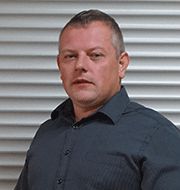
Mr. Darko Hocevar; Technical Manager of FerroCrtalic, FAA Certificated Shot Peening expert
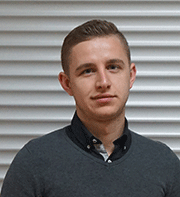
Mr. Aljaz Molek; Technical Sales Representative of FerroCrtalic, FAA Certificated Shot Peening expert
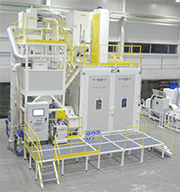
Robotic Shot Peening Cell for landing gears and other aviation components
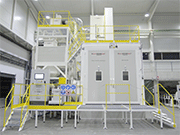
Robotic Shot Peening Cell ASP 1200 ECO
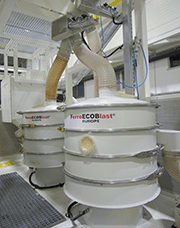
Size classification of peening media
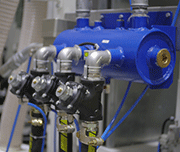
Controllable pneumatic system
MFN had the pleasure to talk to Mr. Darko Hocevar, the Technical Manager, and Mr. Aljaz Molek, the Technical Sales Representative of FerroCrtalic.
(?) MFN: What is the function of the latest "ASP 1200 ECO" automatic robotized shot-peening cell, and what makes it so important that it is required by the largest Asian airline service centre?
(!) D. H.: The "ASP1200 ECO" automatic robotized peening cell was designed and built for a customer in Asia, who will be using it during the service procedure for shot peening aircraft landing gears. The cell satisfies and even exceeds the demanding requirements of various SAE / AMS standards and requirements in aviation industries, which is facilitated by advanced, computer-based systems.
In shot peening, it is important that the cell provides a repeatable process, i.e. peening the same places from the same distance, with the same speed of nozzle movement, the same pressure, and the same flow of the abrasive. A very important additional factor in the whole system is purification, the elimination of inadequate peening material. It is important that there is no waste in the medium, and that the peening beads are not damaged or broken, which is enabled by the use of various components in the recycling tower, such as different vibration screens, magnetic separators, and spiral separators.
Using a spiral separator, we have ensured the separation of damaged or broken beads from the steel beads with correct shapes. With the use of magnetic separators, we can ensure the expulsion of metal inclusions in non-magnetic media (glass beads).
By integrating the automatic dosing system, we ensure the addition of fresh medium to the system in the event of a detected lack of medium. This enables the customer to eliminate downtime due to the need to refill the system.
In order to facilitate an easier and faster system emptying in the event of a change of medium, we have integrated the system for the automatic emptying of the entire system.
This is just a part of the system that makes up the automated robotized shot-peening cell that enables the quality machining of this Asian airline’s components and, consequently, safe landings of aircraft.
In the development phase of the automated robotized shot-peening cell, the correct development and implementation of the sequence of technological processes with which we perform the peening process on the workpiece is extremely important.
It is necessary to know the material of the workpiece, its behaviour in the process of shot peening, and how this process affects the mechanical properties of the workpiece.
Therefore, it is important to know beforehand the technology of aeronautical production and the mechanical and chemical properties of materials on which we will perform the shot peening process.
Without knowledge of prior behaviour, the process of shot peening can be not only performed improperly, but it may also represent a certain risk for the product due to a wrong execution of the shot peening procedure, thus achieving a completely opposite effect, so the sequence of operations on the workpiece that is prescribed is extremely important.
(?) MFN: What security systems are installed, and what does this mean in practice?
(!) D. H.: The entire system is designed to protect operators during the work process as well as repairers during maintenance. In this case, we use one of the technologies (SICK) with a security key / card, which ensures that the work process cannot be started during maintenance. In addition to this system, the equipment includes all other safety-warning systems, the so-called security chain, which provides operator safety during the operation, and the safe operation of the entire cell.
(?) MFN: In your 53-year history, you have already made some shot peening machines. In what way does this one differ from others, its predecessors?
(!) A. M.: The ASP 1200 ECO automatic robotic shot peening cell is special because it is universal and suitable for high-quality machining of various aircraft components since it has many built-in applications. For example, the peening of long pieces which comprise the chassis, the vertical internal peening unit, the peening of holes with the rotary lance, the automatic tool change with a laser gauge to check the suitability of the selected tool...
What makes it special is also the mobile cart with a rotating table and eight satellites. The cart is brought to the outer platform where parts of the chassis are fastened to the rotating table. Large sections of the chassis are usually fastened to the table, and up to eight smaller ones to the satellites. The rotation of the table and the satellites is synchronized with the movement of the robot, which means that we can peen multiple workpieces at a time, enabling substantial savings of time and, consequently, money.
The cell has a built-in camera that allows us to record and control the process.
The entire cell is operated by the SCADA system, which is User-Friendly, and has simplified machine management, thus achieving greater operator satisfaction, as well as greater supervisor satisfaction over handling airplanes.
(?) MFN: What are its features, what parameters does it offer?
(!) D. H.: The cell is built for peening with two basic abrasives: Glass bead and steel shot, that is, the metallic and non-metallic materials inside one cell, which are rapidly and automatically changed, without operator intervention Also, the robot itself changes the necessary tools (nozzles), which again results in a shorter peening (processing) time.
The use of advanced control systems (flux on) ensures fast and efficient regulation of special magna valves, with which we can achieve an accuracy of +/- 2% of the flow of the medium.
Integration of the in-line system for calibration of magna valves which ensure the proper flow of medium, both for steel and glass beads.
Also integrated is the software for the direct recording of the results of measurements in the implementation of Almen tests, which help us control the intensity of shot peening.
Integration of an on-line camera in the workspace that records the machining process of each workpiece in order to ensure the traceability of the workpieces and of each workpiece separately.
Finally, we have full information recorded for each single workpiece.
Integration of the SICK security system to prevent the presence of a worker in the workspace before starting up.
(?) MFN: Which aircraft parts will be processed and for which aircraft types?
(!) D. H.: This particular cell is a design for shot peening components of a landing chassis for the Airbus A320 and Boeing 737NG.
(?) MFN: In which industries do you use your shot peening machines?
(!) D. H.: They are used in the automotive industry, gearboxes and suspension, and in the field of internal combustion engine components.
We can boast of our own shot-peening cell, with which we offer services of shot peening on various products for customers from both the automobile and aviation industries.
(?) MFN: Where else are you active?
(!) A. M.: In any case, our goal and long-term vision is to conquer other similar areas where such technology is necessary and important. In the first phase, we want to proceed in the direction of surface peening - laser peening, and shot peening in combination with water, so-called wet peening. Here we also cooperate very closely with our partners, the best world-renowned companies and leaders in this field.
In the field of nuclear technology, we can already boast about our implemented applications for UHP (Ultra high pressure) surface decontamination.
MFN would like to thank Darko Hocevar and Aljaz Molek for this interview!
For Information:
FerroCrtalic d.o.o.
Sela pri Dolenjskih Toplicah 47
8350 Dolenjske Toplice, Slovenia
Tel. +386.7.38 45 100
Fax +386.7.38 45 115
E-mail: darko.hocevar@ferrocrtalic.com
aljaz.molek@ferrocrtalic.com
www.ferroECOblast.com



























